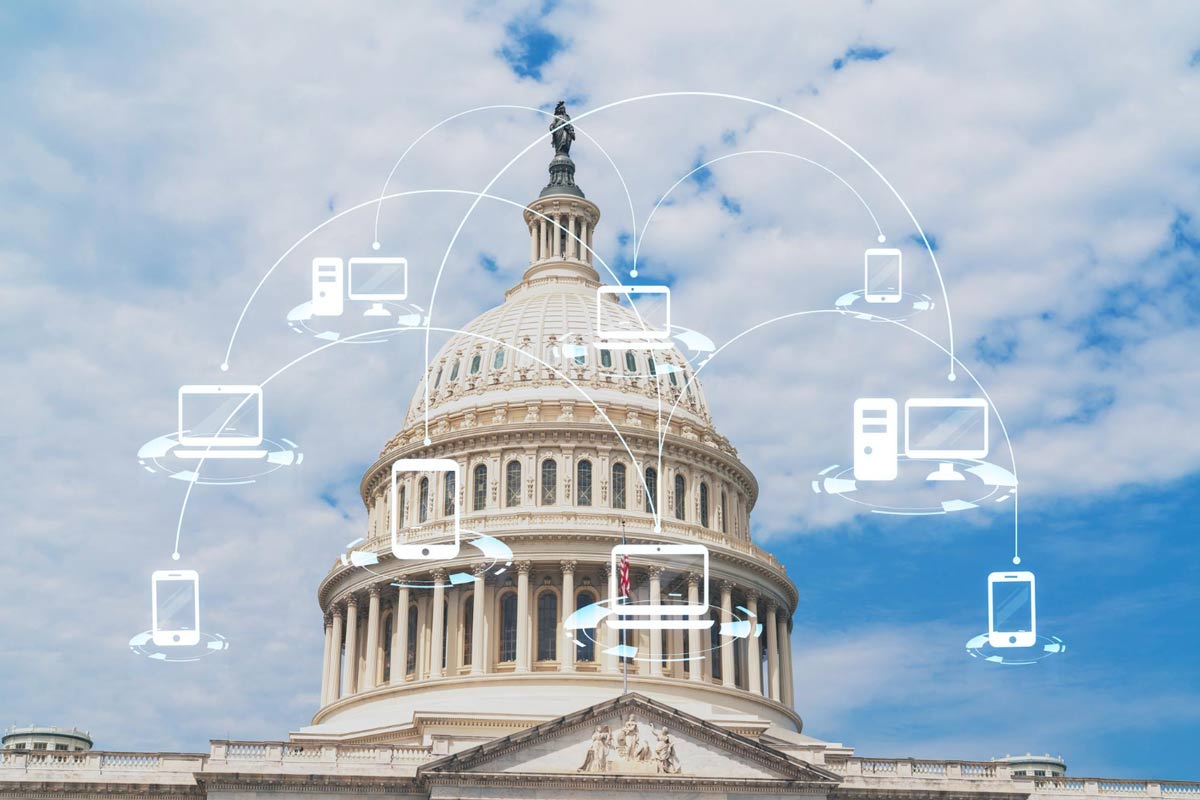
How to Develop a Government IT Modernization Strategy
In the sixties, the U.S. pioneered the innovative technology necessary for space exploration. Since then, we’ve fallen behind in many ways, technologically, even as we increased our reliance on IT contractors. Today, whether deserved or not, government websites have a reputation for being hard to navigate and slow, crashing and burning when usage ramps up. This reputation reflects poorly on our federal agencies and the contractors they do business with.
The good news is government leaders know they have a problem. Recent government investments and rules suggest an effort to “rebuild trust in our government, ensure no one is left behind and inspire others to serve.”
Technology is at the forefront of these initiatives. Better software means greater efficiencies to serve the public good. Cloud and hybrid infrastructures must stand alongside modernized on-premises hardware to create government technology that is more secure, faster and easier to use. Given that a huge and increasing volume of IT is outsourced, this modernization effort doesn’t just affect federal agencies, it strongly affects their third-party contractors and the standards the government requires when doing business with these companies.
This blog looks at the government’s effort to modernize and the effect of these initiatives on federal agencies and their contractors.
Difficulties in Developing a Government IT Modernization Strategy
In recent years, two-thirds of federal agencies moved some of their data to third-party cloud vendors. FedRAMP established new critical metrics for third-party cloud providers and contractors seeking to work with government entities.
Today, one in four government workers trust the cloud to handle:
- Research (51%)
- Business and financial operations data (47%)
- Employee and HR data (47%)
Over one-third of federal IT leaders say they even trust classified and sensitive data in the government cloud. These significant attitude shifts accompany the growing push for IT modernization that is increasing federal reliance on cloud providers and other third-party vendors.
But we should hold our applause because there are still significant challenges with IT modernization at the federal and state level. What’s holding us back?
- Pay disparities between public and private organizations. Private company tech workers receive more (nearly double) the salary of IT teams working in the government sector. Most of the top IT talent the government seeks to attract will avoid our currently outdated hardware and software.
- Government procurement and budgeting processes slow down IT modernization. Some government organizations have the funding, and some don’t. Defense spending is always fairly robust, so you can count on the DoD to work with third-party tech companies on cybersecurity or other IT modernization strategies. But other agencies are lagging and the processes for procurement approval are anything but streamlined.
Even the growing adoption of cloud services comes with challenges; the government needs IT experts to configure and maintain these systems. These tasks often fall on third-party cybersecurity experts.
Federal government IT modernization brings significant changes not just for federal agencies, but also for their contractors. As the government seeks to enhance its IT infrastructure and services, agencies and contractors must adapt to evolving requirements, prioritize cybersecurity and compliance and offer modern solutions to remain competitive. Public and private organizations that successfully embrace IT modernization and align their services with government objectives will be best positioned to thrive in this evolving landscape.
Fostering IT Modernization via Third-Party Contractors

The first signal that the government was undertaking a systematized IT modernization effort was the 2011 Federal Risk and Authorization (FedRAMP) program. Around the same time, the National Institute of Standards and Technology (NIST) released new standards for cloud cybersecurity. These regulations are instrumental in setting the standards for government agencies and those they work with. New contractor, encryption and cloud security strategies are the minimum for evolving our government IT modernization strategies.
Government contracting for IT has increased since 2019. The push toward smaller government forced many organizations to increase their reliance on IT vendors. As the government prioritizes upgrading its IT infrastructure and systems, third-party contractors, who are crucial in supporting and delivering government services, have been directly influenced in various ways.
Some of the effects of federal government IT modernization include:
- Increased demand for providers who can provide modern IT services and solutions. Contractors with expertise in cloud computing, data analytics, cybersecurity and agile development are in high demand as the government seeks IT modernization.
- With NIST and the upcoming CMMC, government agencies have stringent data security and compliance requirements that contractors must also adhere to. Third-party organizations must invest in robust security measures and comply with relevant regulations to work with government agencies effectively.
- Government regulations and internal rules now often include provisions related to IT modernization, data protection and adherence to specific technology standards. Agencies and contractors must adapt to these evolving requirements to remain competitive and win government contracts.
- There is a greater emphasis on interoperability and integration between various systems and platforms. Third-party contractors must ensure that their solutions seamlessly integrate with existing government systems and infrastructure.
- Contractors may design, develop and implement IT modernization strategies in partnership with government teams. Effective collaboration and communication between all stakeholders are critical for the success of these projects.
- Federal government IT modernization creates opportunities for third-party contractors to innovate and offer novel solutions. Contractors with cutting-edge technologies and approaches can contribute value to IT modernization efforts and establish themselves as industry leaders.
- Contractors must demonstrate their capabilities, track record and expertise to stand out in a highly competitive marketplace.
- IT modernization is not a short-term initiative. The shift from short-term projects to longer, more comprehensive efforts requires third-party contractors to adjust their business models and adapt to longer project timelines.
- With IT modernization, the demand for skilled IT professionals with expertise in modern technologies increases. Federal agencies and their contractors must recruit and retain qualified personnel with the necessary skills to meet the requirements of government modernization projects.
As the government’s IT modernization strategy moves forward, we expect continued revision of the current NIST and FedRAMP standards and additional compliance rules for agencies and their third-party contractors. Also, expect the government to continue to rely on a mix of its internal IT workforce and subcontractors to meet its modernization goals.
How Can Federal Agencies Modernize Their IT?
Working with trusted technology partners who have experience modernizing IT for large organizations like federal agencies and third-party contractors is imperative for the government to bring its IT up to the current standard. One option is to use specialized offerings like Dell’s EMC PowerEdge servers, which offer robust security and compliance features not found in the public cloud, including:
- Secure root-of-trust technology
- Secure memory encryption
- Secure encrypted virtualization (SEV)
Red River remains a strong partner with state and federal government organizations. We continue to innovate our processes and tools to meet the demands of our evolving customers. Contact us to find out more about our work in the federal space.
If you’re interested in learning more about how Red River can help federal agencies modernize their IT, click the link below to download our free ebook on federal IT modernization.


written by
Corrin Jones
Corrin Jones is the Director of Digital Demand Generation. With over ten years of experience, she specializes in creating content and executing campaigns to drive growth and revenue. Connect with Corrin on LinkedIn.




